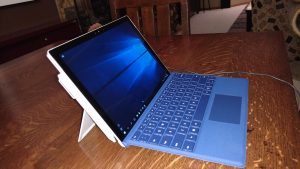So many things can be used for either good or evil (or idle).
Over the years I’ve collected odds and ends of software, things that purport to be–and in some cases are–useful tools for the writer. Here, in no particular order, are a few of them:
Evernote is one of the great free downloads of all time. I use this shareware a lot. It’s basically an endless scroll of notepaper. You can write to it, but I use it mostly for clipping items–with one click you can copy anything, text or image, from email, files, or the Internet (I had to download an extra software extension to use it with Mozilla Thunderbird and Firefox, but it’s simple). You can tag each entry with as many categories as you want; the program comes with a handful of preset categories, and you can create more of your own. Then you can sort the entries by category. One of my recent clips–a book review I read on salon.com–is tagged as belonging to my Atheism, To Read, Consciousness, and Science Fiction categories. That piece on The Well-Tempered Plot Device that I posted at Taos is tagged to Science Fiction, Writing, and Funny. And so on. The entries collapse into headings for quick scanning. Overall, Evernote is one of my favorite utilities. I use it to keep track of all the miscellaneous stuff I want to download/remember, without having to do anything more than select and click. Periodically I scroll through recent entries to update the categories or delete stale items, but it requires very little maintenance. You can check Evernote out at http://www.evernote.com
PageFour is another easy-to-use piece of shareware. It’s a set of simple notebooks that you can name whatever you want (you get three notebooks with the free version; if you buy the license–not very expensive–you can create as many as you want). Within each notebook you create pages–for example, if you are using a notebook to work on a novel, you might have one page devoted to character notes, another to a chapter outline, and another to the text you are composing. PageFour is basically a stripped-down word-processing program that its designer says is put together to serve writers, not businesspeople. It imports and exports to/from Word, OpenOffice, and other WP programs. I have not yet written a long document in PF and may never do so; I like the OpenOffice word processor just fine. But PF makes a nice notebook for journaling, collecting thoughts, and organizing projects. The interface is simple and colorful; it reminds me of the new notebooks and pencil cases I used to love getting before each school year. Details and downloads are at http://www.softwareforwriting.com/pagefour.html
FreeMind is another piece of freeware. It’s mindmapping software for the visual thinker. I haven’t used any other mindmapping programs, but I found FreeMind super-easy to customize with color, shape, font, symbols, etc. It also accommodates long notes and other blocks of text that collapse and open again with a single click. FreeMind files are exportable as PDFs. I have a large whiteboard in my office, with many different colors of pens, that I have used to make notes for the three novels in my time-travel story. At one point the whiteboard was so filled with notes–ideas for names, notes of things to fix or add, and so on–that I couldn’t use it for anything new for a long time. It just sat there, colorful but static. After downloading FreeMind I took an hour to transfer all of the stuff from the whiteboard to a mindmap (and got a bunch of good new ideas while doing so). Now I have a single big mindmap for the series, with a section for each novel, each with its own color. Within each novel I can unfold many subsections with such titles as Quotes, Character names, Settings, Scenes, and Random Cool Ideas. Each subsection can hold as many separate notes or entries as I want to put there, all linked to their place in the overall scheme of things. I still use the whiteboard to jot stuff down in the heat of the moment, but now I transfer things to FreeMind when I have a minute, so I can back it up and erase the board. You can look at this software at http://freemind.sourceforge.net
Power Structure and Power Writer are full of bells and whistles; they also come with unusually whimsical Helps. (Note: These are not freeware.) I got the two as a bundled package, but they are usually sold separately; there is a great deal of overlap. PS is specifically a planning and outlining program; PW is similar but includes a word-processor that is compatible with Word, etc. These programs are designed to serve as story-development tools for novelists and screenwriters. I haven’t used them much, which will not come as a surprise to anyone who has read the first novel in my series. But I intend to use the Note-Card function in PS to do a Taos-style plot break of BS one of these days, when I have a chunk of time. You can get more info on these programs at http://www.write-brain.com
So that’s my little arsenal. Anyone else have any writing-related tools to recommend, or any experiences with these to share?

